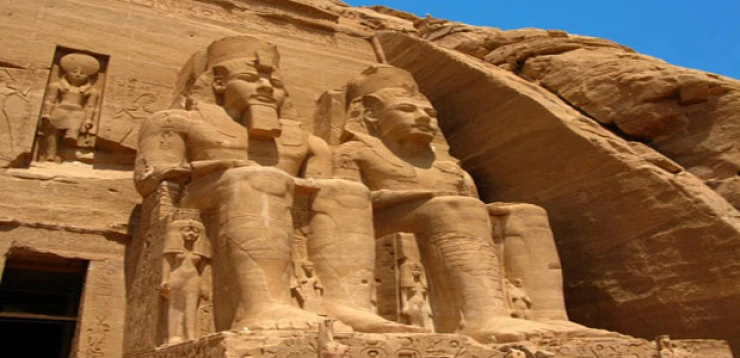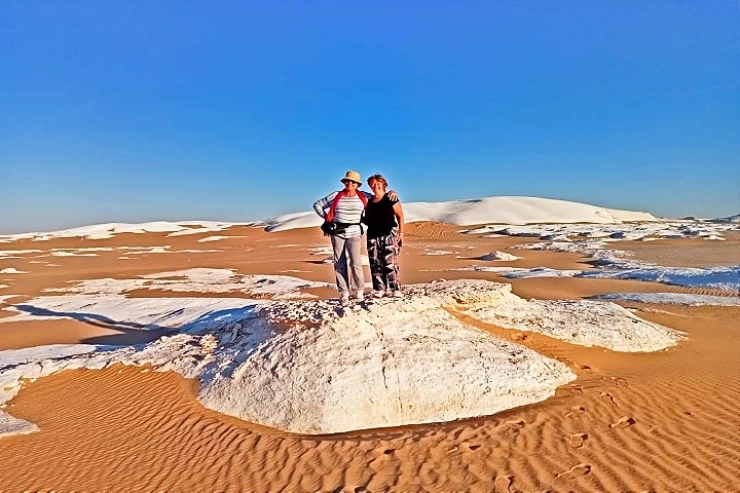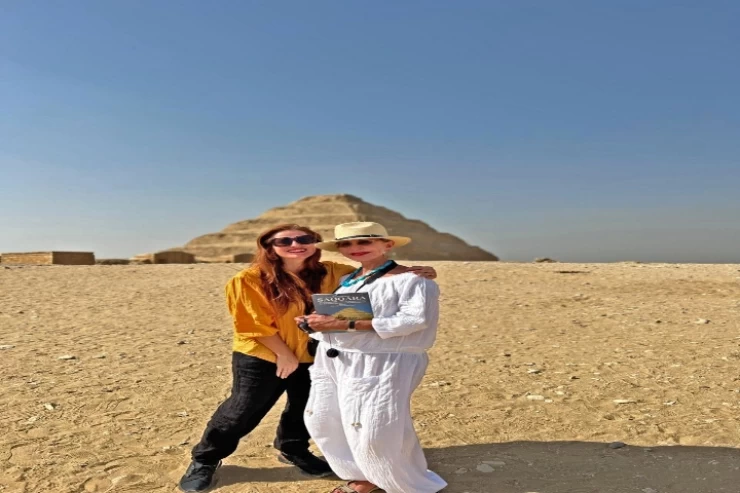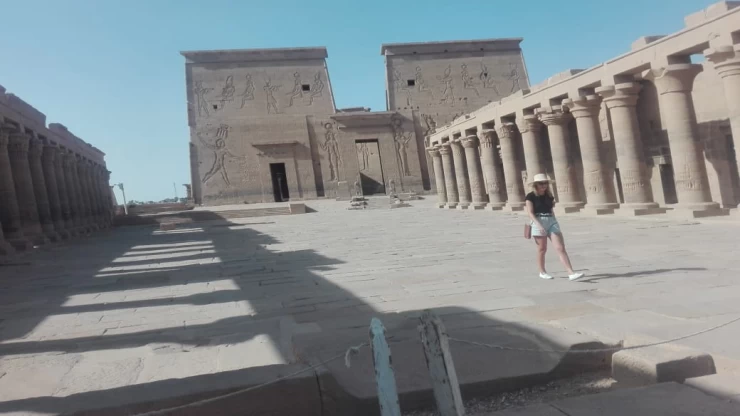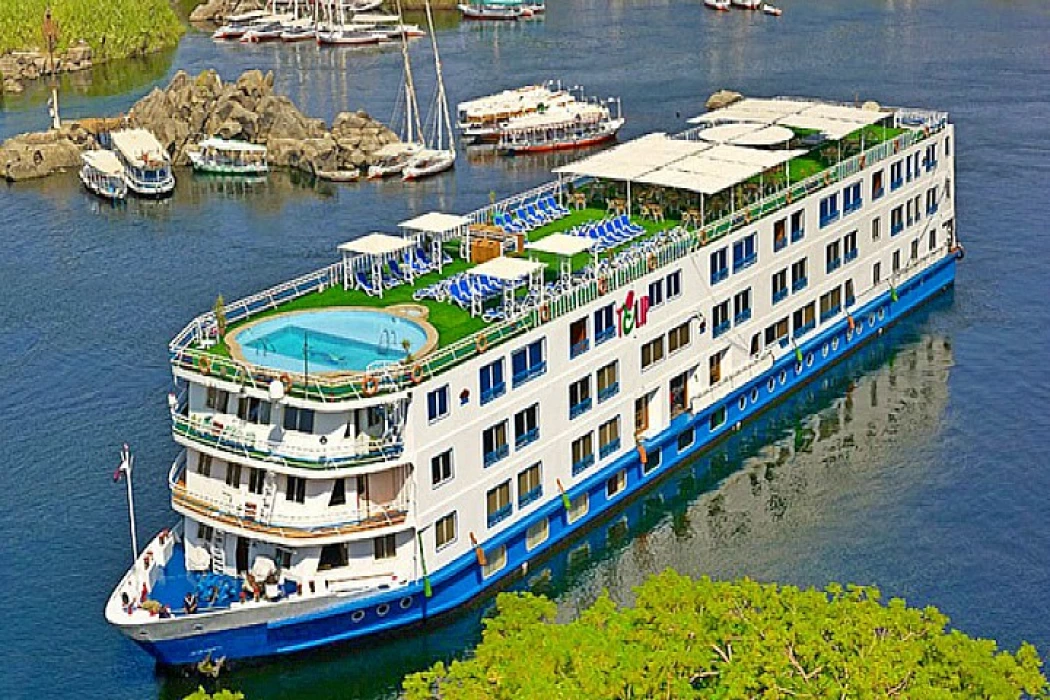
Your Guide to the Nile River attraction
The Nile, which rises in East Africa and empties into the Mediterranean via Egypt, is the world's longest river at 4,250 miles. Nile River cruises and tours begin in Aswan and continue north to Luxor, one of Egypt's most important archaeological sites.
The Nile is the world's longest river, spanning 4,100 miles from Uganda to Egypt. Depending on where you are along the Nile, you could be in practically any current environment, including high and low mountains, deserts, and rainforests. The wonderfully diverse Nile is home to thousands of plant and animal species, as well as archaeological monuments along its banks.
Pyramids of Giza
These are a few must-see sights for travelers exploring the Nile.
The Great Pyramids are located just outside Cairo, Egypt, where most Nile River cruises end. These achievements of ancient engineering were designed as opulent tombs for the Pharaohs, who were regarded as gods, and they exist in practically everyone's imagination today.
The complex consists of three major pyramids, three smaller pyramids, and the Great Sphinx. The Great Pyramid is one of the Seven Wonders of the World, and it is the only ancient wonder that still exists today. After your Nile trip, ride a camel to the desert to explore these ancient and mystical treasures. A vacation to Egypt is not complete without seeing the pyramids!
ABU SIMBEL
Two gigantic rock temples are located in Aswan's town of Abu Simbel. They are instantly recognizable temples associated with Egypt in the popular imagination. Abu Simbel is merely a necessary stop for tourists visiting Egypt. The huge temples, with four large carvings at the entryway, some of which are incomplete, display indications of their antiquity and past. The twin temples, originally sculpted in the 13th century, are permanent memorials to King Ramses II and his queen, Nefertari.
The temples were moved from their original location in the 1960s, and the rescue mission was critical in protecting these remarkable structures from degradation as a result of the Aswan High Dam's construction in Lake Nesser.
VALLEY OF KINGS
The Valley of the Kings is located on the Nile's West Bank, opposite Luxor in Egypt. There are 63 tombs built here for Royal Egyptians and high-ranking nobles. Tutankhamun is the most famous ruler buried in the valley. Much of your Nile River Cruise will take you through the Valley of the Kings.
The Valley of the Kings, also known as the "gateway to the afterlife," continues to inspire legend today, just as it did when the Pharaohs declared it sacrosanct. Your tour will reveal this through old myths and a dive into the area's historical realities. With various temples, tombs, and ancient monuments, take advantage of shore excursions to discover this interesting cultural landscape.
LUXOR
Depending on your itinerary, your Nile River cruise will begin at either Luxor or Aswan. Shorter Nile River cruises start in Luxor. The biggest disadvantage of starting in Luxor is that you may not visit Edfu Temple to the south. Luxor is the current name for Thebes, Ancient Egypt's capital and key hub.
Thebes is located within Luxor, and visitors can explore the royal necropolis, Karnak Temple Complex, and Luxor Temple. Luxor, sometimes referred to as an "open-air museum" due to the sheer amount of ancient buildings and statues that dot the city, is the ideal place to start your Nile River cruise adventure or to revisit ancient Egypt's potent symbolism.
ASWAN
If your Nile River trip is on the longer side, it will start in Aswan. For ages, Aswan has served as an important port and Nile River entrance in Egypt, and it remains a thriving market today. There are several museums to visit here, which is an excellent idea before beginning on your boat over the historic Nile! Aswan has a remarkably extensive history dating back to the third millennium. Archaeologists discovered mummies, ancient pottery, and hieroglyphics at Aswan.
If you have time, spend a day or two at Aswan to learn about the local culture, swim in the Nile, and visit the nearby island of Seheyl.
From the pyramids of Meroë to the temples of Luxor, the Nile is a river of wonders
The Nile River is the lifeblood of Egypt, a widely popular waterway that has been shaping civilizations, inspiring legends, and attracting travelers for years from every nook and corner of the world. Whether this means taking a Nile River cruise, planning a visit to historical sites along its banks, or simply wanting to soak in its tranquil beauty, there are indeed many ways to make the most of one's experience. The following are essential tips that would be helpful in exploring some attractions of the river and discovering its timeless charm.
The most popular way to see the river and its attractions is to take a Nile cruise. Most Nile cruises cover the stretch between Luxor and Aswan, with stops at key archaeological sites.
Choose the right type of cruise: Luxury cruises offering five-star amenities, traditional dahabiya sailboats for smaller groups, and more economical options are available.
Book ahead, as cruises can fill quickly, especially during peak winter and early spring seasons. Consider the itinerary: It must include the main sites such as the Valley of the Kings, the Temple of Karnak, Kom Ombo, and the Temple of Philae.
One distinctive pillar of Egypt is the Nile River. However, the short stretch between Aswan and Luxor in southern Egypt is the most interesting part for luxury boating to and from Luxor...The antiquities of this region are not only architectural masterpieces, but also windows into Egyptian civilization.
This stretch is distinguished by the ancient treasures scattered along its banks. It is home to some of the largest and most interesting temples built in ancient times, such as the amazing Karnak Temples, the Valley of the Kings, the Crocodile Museum in Kom Ombo, and the water-bound Philae Island.
This stretch is also characterized by its enchanting nature, which adorns the banks of the Nile like a mosaic, with emerald green farms, palm groves, amber desert, and a ruby-red sky at dusk as the sun sets behind the seemingly endless desert dunes.
Being the route of history buffs, one will find the majority of the famous temples and monuments of Egypt along the bank of the river. Luxor and Karnak Temples: These are extensive temple complexes in Luxor and rank among the most critical ones in ancient Egypt.
Abu Simbel: Lying close to Aswan, these rock-cut temples are a World Heritage Site as per UNESCO declarations and form part of the itinerary of any Nile voyage.
Temple of Edfu and Kom Ombo: Both lying between Luxor and Aswan, these temples display peculiar aspects of ancient Egyptian religion and architecture.
Enjoy the warm winter weather among the stunning landscape and enchanted setting of Aswan with Nile cruises, one of the greatest choices for a journey to the beauty of the South.
Aswan Governorate is adorned during the winter season, welcoming thousands of foreign tourists and Egyptian visitors who flock to southern Egypt during the mid-year and winter holidays to spend a pleasant time surrounded by nature, ancient civilization, and the warm, stable winter weather.
The time of year can greatly affect your experience on the Nile.
High season: October to April has generally mild temperatures, which makes sightseeing easier.
Low season: May to September is hotter; however, you will face fewer crowds and have better deals on cruises and accommodations.
Time of day: Early morning tours will help you avoid midday heat and give you spectacular sunrises over the Nile.
A favorite local activity is taking a felucca and turning it into a sailing party along the Nile Corniche. Felucca rentals are reasonably priced and can be rented by the hour. During this tour, you can play any music you like and take all your favorite food on board. These wooden boats cut through the water and transport you away from the hustle and bustle of the city in minutes. They are also great on a hot summer day, stopping around several points in Cairo.
Consider sailing on a felucca, the traditional Egyptian sailboat, for a more genuine and laid-back experience.
Short rides: These are ideal for sunset or evening trips.
Custom tours: You can book multi-day feluca trips if you want to take it easy and see more of the area at your own pace.
Pack accordingly: Bring sunscreen, comfortable clothing, and water for a comfortable ride.







